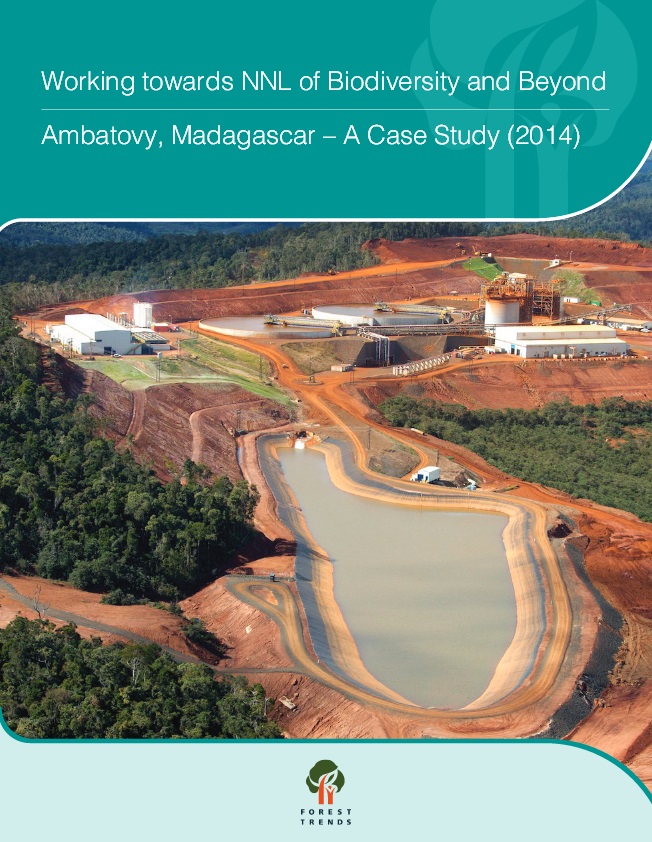 Amrei von Hase, Andrew Cooke, Aristide Andrianarimisa, Rivolala Andriamparany, Vanessa Mass, Robin Mitchell and Kerry ten Kate Have published a new report on the BBOP Ambatovy mining case study in Madagascar entitled “Working Towards No Net Loss and Beyond. Ambatovy, Madagascar — A Case Study (2014)”.
Amrei von Hase, Andrew Cooke, Aristide Andrianarimisa, Rivolala Andriamparany, Vanessa Mass, Robin Mitchell and Kerry ten Kate Have published a new report on the BBOP Ambatovy mining case study in Madagascar entitled “Working Towards No Net Loss and Beyond. Ambatovy, Madagascar — A Case Study (2014)”.
You can download it from the BBOP library (thanks Patrick for sharing this information). The document is available online. For more information see the abstract and some of the authors’ conclusions below.
Abstract
Ambatovy joined the Business and Biodiversity Offsets Programme (BBOP) in 2006 as a pilot project. In 2009, Ambatovy, together with BBOP, published a case study on the company’s biodiversity management and offset work up to that point (available at http://www.forest-trends.org/documents/fi les/doc_3118.pdf). The present document serves as an update on Ambatovy’s progress achieved since then and following a second-party evaluation (pre-audit) against the BBOP Standard on Biodiversity Offsets (BBOP, 2012) and the International Finance Corporation’s Performance Standard 6 (IFC, 2012). For more detail and a history of the company’s work in applying the mitigation hierarchy and biodiversity offsetting, it is useful also to refer back to the 2009 original case study.
Conclusions
In conclusion: Experience has shown that offsetting of residual biodiversity impacts must be seen as an integral part of the mitigation hierarchy, involving fi rst and foremost the design and implementation of rigorous, defensible, and realistic avoidance, minimisation, and restoration measures. Furthermore, putting in place an adaptive management approach to reconcile the assumptions upon which the mitigation measures were based with empirical evidence of their results is essential. These elements of best practice are fundamental to the approach taken by Ambatovy in order to support the company’s efforts to fulfi l its commitment to no net loss of biodiversity in line with international standards and evolving best practice.
A number of technical and practical challenges are involved in working towards the goal of no net loss. These have included aspects such as defi ning appropriate biodiversity metrics, collecting the data required for analyzing and monitoring biodiversity across a range of sites, and developing and retaining the expertise required to support this work. It is not easy, perhaps especially in a situation characterised by high levels of biodiversity, to move beyond the most basic metrics (such as habitat hectares) to include priority species or to develop practical monitoring systems to provide independently verifi able information. Guidance from external specialists has been essential, yet the available pool of skills in this area of expertise is still quite limited. Furthermore, the implementation of effective and lasting biodiversity conservation measures is not a trivial task in a context such as presented by Madagascar.
These challenges should not, however, be allowed to delay measures to address the complex social and economic challenges that need to be addressed to develop appropriate and adequate biodiversity offsets. The Biodiversity Offset Standard, in particular, is helpful in highlighting the key principles and requirements for making offsets a defensible and lasting component of the mitigation hierarchy. Overall, the combination of IFC performance standards PS6 and PS1 and the Biodiversity Offset Standard provides a clear and coherent framework for achieving no net loss or a net gain for biodiversity and this has been indispensable in guiding Ambatovy’s biodiversity management and conservation programme.
